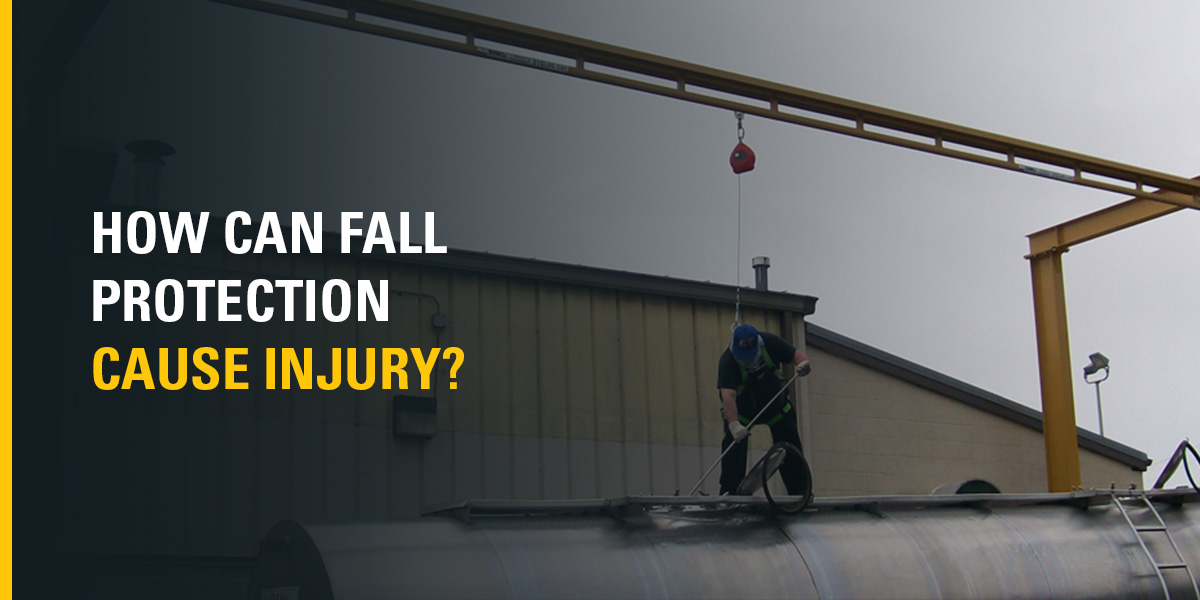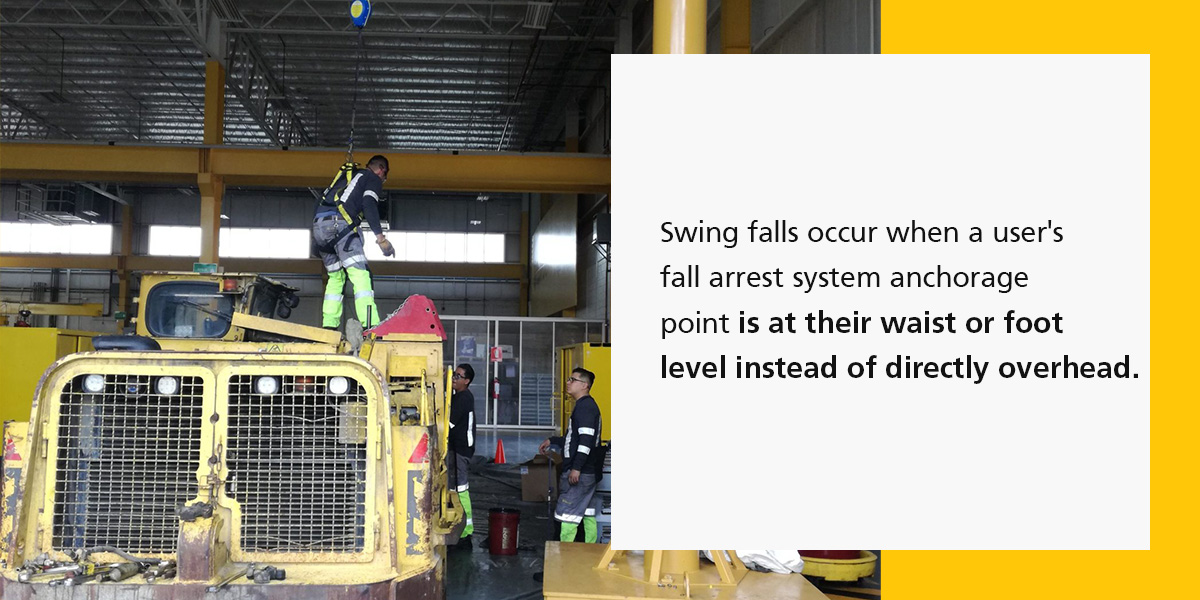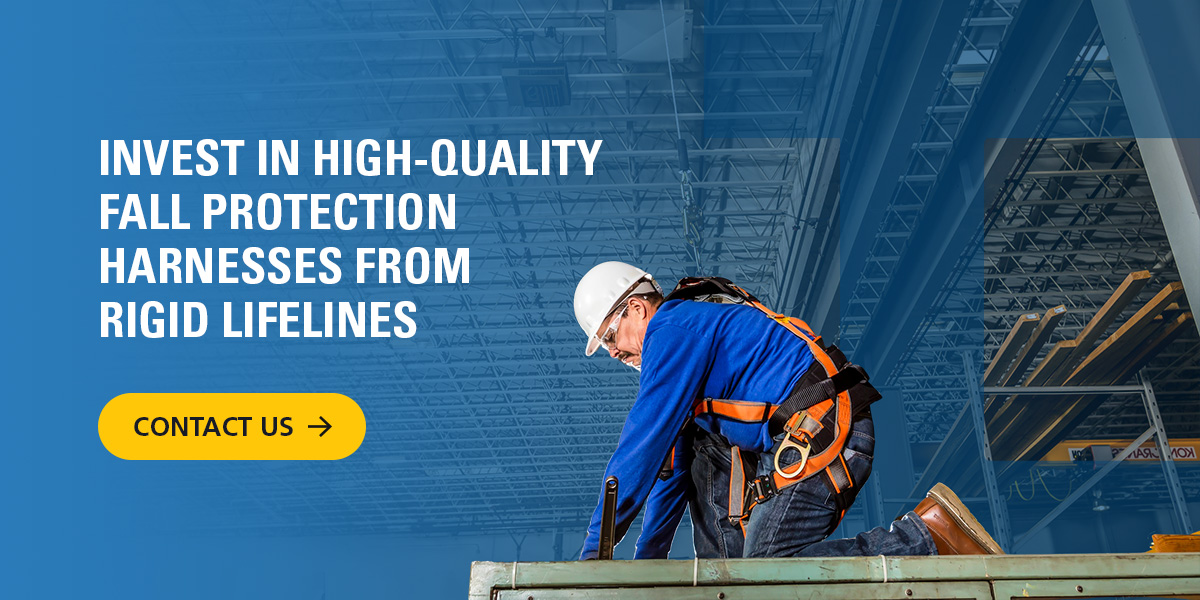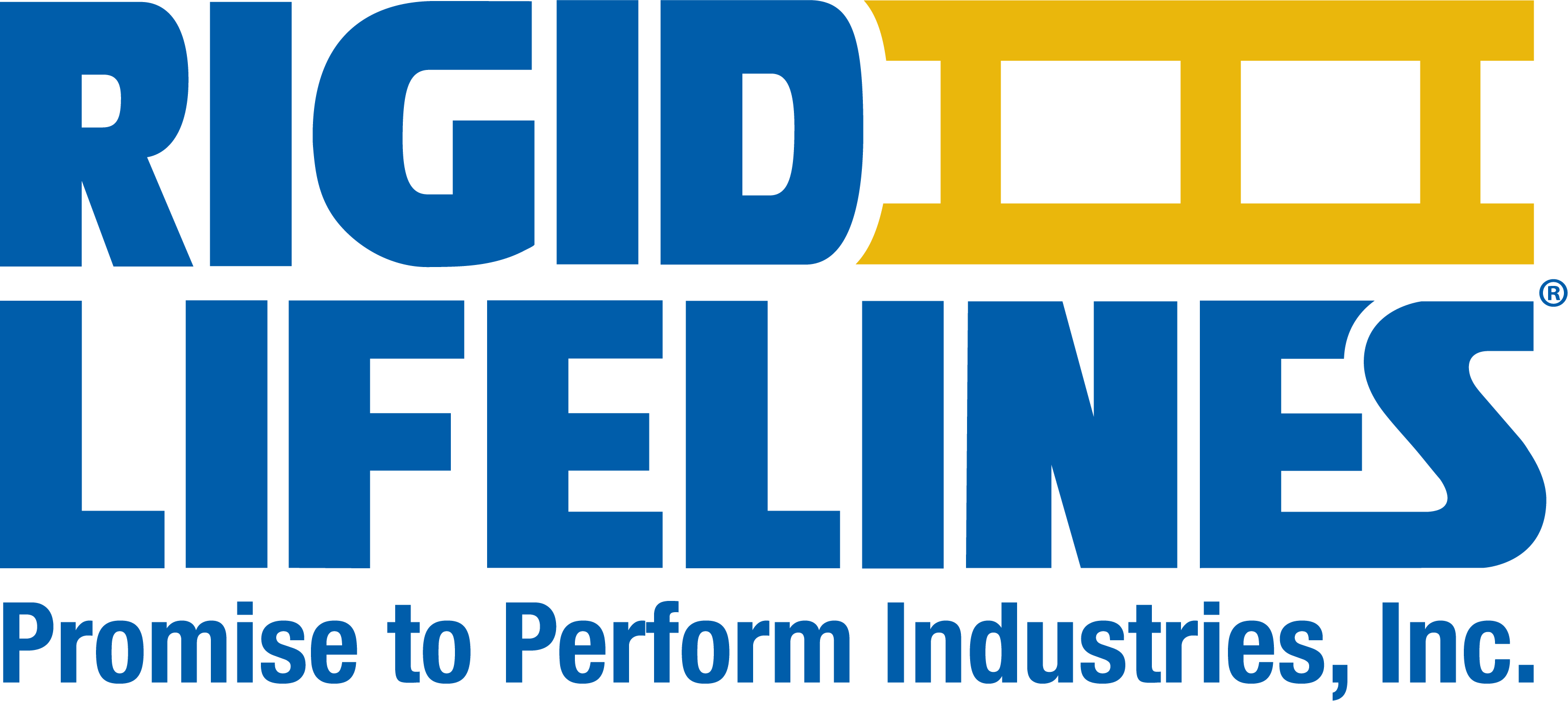
How Can Fall Protection Cause Injury?
January 22, 2025
Falls are among the most common causes of workplace injuries and deaths. Fall protection systems are installed to avoid those potential outcomes. However, improper use, honest mistakes, and accidents can make fall protection systems risk factors in the workplace. The best way to avoid fall protection injuries is to ensure everyone in the workplace understands how these systems work, their dangers, and how to reduce those risks.
Common Fall Protection Problems and Solutions
Fall protection systems improve ergonomics and worker safety, especially when they are installed correctly and employees are trained appropriately. However, improperly installed and used systems pose different dangers to workers.
1. Suspension Trauma
Suspension trauma, clinically known as harness hang syndrome or orthostatic intolerance, is the circulatory shock that occurs when someone is suspended in an unusual position for a long time. This hazard commonly occurs when a worker falls into a fall arrest harness and the straps press against them, cutting off the blood supply.
The stress from suspension trauma may cause a wide variety of injuries, including kidney and brain damage from toxic blood reentering the body. The longer the worker remains suspended and uncomfortable, the higher the risk of more serious conditions like a heart attack or stroke.
Post-fall arrest, look out for the following signs and symptoms of suspension trauma:
- Shortness of breath
- Paleness
- Dizziness
- Unconsciousness
- Low blood pressure
- Heart rate fluctuations
The best way to prevent suspension trauma caused by fall prevention equipment involves creating a prompt rescue plan. The less time it takes to rescue a worker post-fall arrest, the less likely serious suspension trauma injuries are to occur. A good rescue plan is written clearly and shown to all employees, especially those working at heights, and typically describes guidelines for:
- Self-rescue operations that involve workers pulling themselves into a standing position.
- Assisted self-rescue when workers need to use equipment like rope to lower or raise themselves to a secure level.
- Assisted rescue when workers are unable to help themselves and need a rescue team to bring them to safety with minimal injuries.
2. Swing Falls

Swing falls occur when a user’s fall arrest system anchorage point is at their waist or foot level instead of directly overhead. When a worker falls, the forward momentum and unstable anchor point make them move in a pendulum-like motion. This can result in them bumping into things.
The speed and angle at which workers fall and swing into their surroundings can result in cuts, bruises, sprains, broken bones, concussions, or fatalities. If the worker is not rescued promptly, the pressure exerted by the harness may lead to suspension trauma or permanent tissue damage. Here are some practices you can employ to minimize swing falls:
- Ensuring the fall prevention system anchorage point is always directly above the work area
- Using rigid horizontal overhead anchorage systems
- Following all the manufacturer’s instructions
- Encouraging workers to stay close to the anchorage point
- Installing mobile anchorage to expand their lifeline and the size of the safe zone
- Sufficiently training workers on correctly using fall protection systems
3. Poorly Fitting Harness
If a harness doesn’t fit properly, a worker can suffer injury during or after a fall event. Aside from falling out of an improperly worn harness, workers can also get bruises or cuts from a harness that’s too tight. Although these are not life-threatening injuries, they can be uncomfortable for workers.
Slipping through a poorly worn harness can result in traumatic injuries, neurological injuries, and organ damage. Sometimes, lack of proper training causes workers to don the harness improperly, resulting in twists, tangles, and snaps, which impact their ability to do their job effectively.
Here are safety precautions you can take to ensure proper use of safety harnesses:
- Training workers on wearing their harnesses properly and connecting them to the rest of the fall protection equipment
- Encouraging workers to inspect their safety harnesses before every use for signs of wear, tear, fatigue, or damage
- Teaching users how to wear safety harnesses snuggly, fasten the buckles correctly, and prevent slippage
- Ensuring each worker dons weight-appropriate harnesses
- Replacing harnesses that have exceeded the typical five-year limit or are showing signs of wear, tear, and damage
4. Hitting Other Objects
Depending on the workspace, there may be more hazards beyond the dangers of height. If the fall protection system in place is not suited for the specific protection application, the worker can suffer bruising, sprains, broken bones, concussions, or death after hitting another object, falling to a lower level, or falling into equipment below their workspace.
The best ways to prevent workers from unintentionally hitting surrounding objects include:
- Selecting the right type of harnesses and lanyards for specific tasks and work environments.
- Ensuring that the system is positioned properly with appropriate equipment for the situation.
- Making sure that the fall arrest and connection devices do not allow a worker to fall any distance into a path of other dangers.
- Conducting a thorough hazard analysis of the work environment.
- Taking accurate measurements when selecting and installing a fall protection system.
Invest in High-Quality Fall Protection Harnesses From Rigid Lifelines
The first step to enhancing fall protection harness safety is investing in high-quality personal fall arrest systems. At Rigid Lifelines, we specialize in a wide selection of fall protection systems, including full-body harnesses, fall arrest, and restraint systems. Our systems meet the ANSI and OSHA fall protection codes to ensure worker safety, and we offer training to help them use these systems effectively.
Contact us today for more information about our fall protection harnesses. You can also check out our blog to learn more about how to protect your workers on the job.

Categories
Share this post
Let us help you
Contact us today to find the perfect product fit for your job
